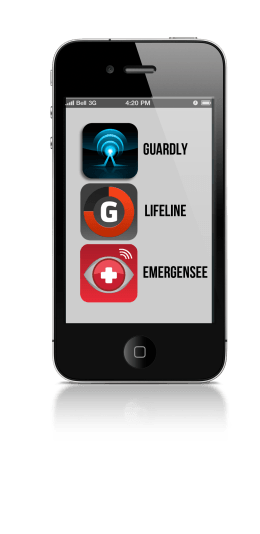
The Youngstown State University Police Department recently unveiled plans to go high-tech in protecting campus.
The department will choose one of three apps that can pinpoint a student’s location and connect him or her to YSU Police dispatch. The three apps under consideration are Guardly, LifeLine and EmergenSee.
YSU Police Chief John Beshara said each one brings something a little different. “We want to know which one will be the best down the line. These things have one- to two-year contracts so that you can get out if something new comes along. The scary part of this is how fast technology moves. A year in technology time is a long time,” Beshara said.
Beshara said he is seeking input from different on- and off-campus agencies to help him decide.
“Our mission is safety for students, faculty and the surrounding community,” Beshara said.
Officer Adam Guerrieri gave a preview of the Guardly app, which compiles all of a user’s information into a biography. This biography then goes into a database.
Guardly has a geofence around campus, which covers areas from Wick Park all the way down to the bridge on Fifth Avenue. From there, a user can open up the app on his or her phone, and it will give a 10-second countdown. After the countdown, it will send a signal to the dispatcher. The user’s biography and general location will then pop up on the screen.
If a user is unable to communicate, he or she can text the dispatcher with the app, as well as take photos and even send out a security whistle.
“This is great, cutting edge technology. It will increase security for everyone. As a parent, the cost for this is minimal,” said Mike Cretella, deputy chief.
However, there have been flaws noted in the technology.
“The only limit is the GPS technology. It is not always pinpoint accurate,” Guerrieri said.
LifeLine and EmergenSee were not available for preview, but Ohio State University is giving LifeLine a trial run in a couple of weeks.
“Each one has different things that make them different. The cost is also workable,” Beshara said.
While the apps are free to download, a service cost comes along with it. The annual fee to run one of these apps would be somewhere between $20,000 and $50,000.Beshara said that it all comes down to funding to afford this technology. He did offer some ideas on how to fund it, though.
“We could have the university cover it as a whole, or we could put something in place where if roughly 6,500 people use it and pay $1.99 per semester, that would cover the cost,” Beshara said. “The best way to fund it, though, would be to have roughly 3,675 people, with the main group being students, use it and add it onto tuition. It would add $3.96 a year to your bill, and that number would decrease if more people were to use the app.”
Another idea that Beshara had would be to charge faculty and administrators 4.99 annually to use the app, since some of them are here during the summer as well.